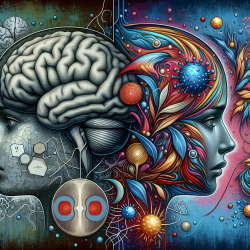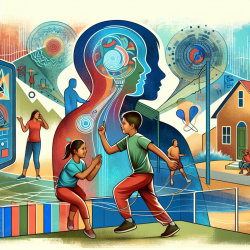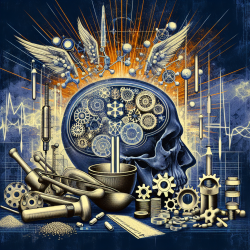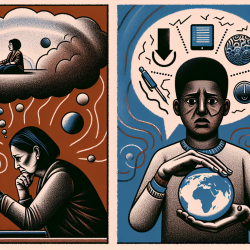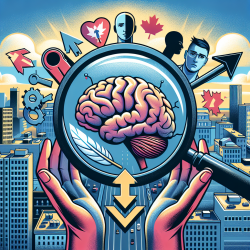Introduction
Chronic headaches are a prevalent issue among youth, often persisting into adulthood. A recent study, "Subclinical post-traumatic stress symptomology and brain structure in youth with chronic headaches," provides valuable insights into the relationship between post-traumatic stress symptoms (PTSS) and chronic headaches in young individuals. This blog aims to help practitioners leverage these findings to improve therapeutic outcomes for children.
Key Findings from the Study
The study investigated the association between PTSS and chronic headaches in youth aged 10-18 years. Key findings include:
- PTSS, smaller amygdala volumes, and poorer cingulum structural connectivity were associated with increased headache frequency.
- Youth with chronic headaches showed greater corticolimbic connectivity compared to controls, which may indicate an early stage of disease progression.
- PTSS and altered brain structures, such as the amygdala and cingulum, were independently linked to headache frequency.
Implications for Practitioners
Understanding the neurobiological underpinnings of PTSS and chronic headaches can guide practitioners in developing targeted interventions. Here are some ways to apply these findings:
- Early Identification: Screen for PTSS in children with chronic headaches to identify those at risk of developing more severe symptoms.
- Integrative Approaches: Incorporate mental health assessments and interventions into chronic pain management plans to address comorbid conditions like PTSS.
- Targeted Therapy: Consider therapies that focus on improving corticolimbic connectivity, such as cognitive-behavioral therapy, which has shown promise in reducing headache frequency.
Encouraging Further Research
While this study provides significant insights, further research is needed to explore the long-term effects of PTSS on brain structure and headache chronicity. Practitioners are encouraged to stay informed about emerging research and consider participating in studies that investigate these complex relationships.
Conclusion
By understanding the link between PTSS and chronic headaches, practitioners can enhance their therapeutic approaches and potentially improve outcomes for children. Addressing both mental health and chronic pain in an integrated manner is crucial for effective treatment.
To read the original research paper, please follow this link: Subclinical post-traumatic stress symptomology and brain structure in youth with chronic headaches.
